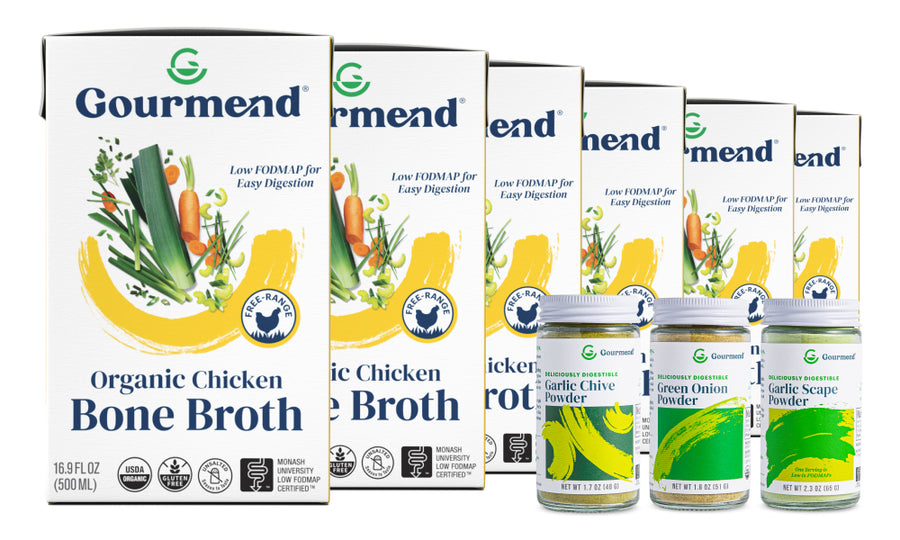Is Squash Low FODMAP? Your Ultimate Variety & Portion Guide

Key Takeaways
- FODMAPs are short-chain carbohydrates that can cause digestive discomfort such as bloating and gas.
- Squash varieties have varying levels of FODMAPs depending on their natural sugar and fiber content.
- Understanding the FODMAP content in different types of squash can help manage digestive symptoms.
Table of Contents
- Understanding FODMAPs in Squash Varieties
- Complete Squash Variety Breakdown
- Cooking Methods That Preserve Low FODMAP Benefits
- Squash Comparison Deep Dive - Which Reigns Supreme?
- Troubleshooting Squash on the Low FODMAP Diet
- Scientific Foundation and Trusted Resources
- Scientific Backing & Real-World Resources
- Your Roadmap to Low FODMAP Squash Mastery
Understanding FODMAPs in Squash Varieties
FODMAPs (fermentable oligosaccharides, disaccharides, monosaccharides, and polyols) are short-chain carbohydrates that ferment in your gut, potentially causing bloating, gas, and digestive discomfort. Squash varieties contain different FODMAP levels based on their natural sugar composition and fiber structure.
The critical factor with squash is portion size. A vegetable that's perfectly gentle at ½ cup can trigger symptoms at 1 cup due to FODMAP accumulation. Monash University's testing reveals that low fodmap vegetables like squash shift from safe to problematic as serving sizes increase, making precision essential for comfortable digestion.
For those starting a low FODMAP journey, the Low FODMAP Foodie Bundle can help you experiment with squash and other vegetables while keeping your meals flavorful and gut-friendly.
Summer vs. Winter Squash: FODMAP Differences
Summer squashes (zucchini, yellow squash) generally offer more generous low FODMAP servings due to their higher water content and lower concentrated sugars. Winter varieties like butternut and acorn pack more natural sugars into denser flesh, requiring smaller portions to stay within safe FODMAP limits.
Complete Squash Variety Breakdown

Zucchini & Yellow Squash - The Generous Options
Best for: Daily cooking and larger portions
Both zucchini and yellow squash are low FODMAP at ½ cup (65g) raw or cooked, making them reliable choices for regular meals. Their mild flavor pairs beautifully with Gourmend's Chicken Bone Broth when spiralized into noodles or diced into soups. These summer varieties maintain their low FODMAP status whether grilled, steamed, or sautéed with chive sprigs for added depth.
Spaghetti Squash - The Volume Champion
Best for: Pasta alternatives and hearty portions
At 1 cup (155g) cooked, spaghetti squash offers the most generous low FODMAP serving of any winter variety. Its unique stringy texture makes an excellent pasta substitute when tossed with Gourmend Beef Bone Broth and fresh herbs. The natural umami from oyster mushrooms and nori in our broths complements spaghetti squash's mild, slightly sweet flavor perfectly.
Butternut & Acorn Squash - Flavor with Limits
Best for: Accent flavors and special occasions
These popular winter squashes require careful portioning. Butternut squash stays low FODMAP at ⅓ cup (45g) cooked, while acorn squash allows ¼ cup (45g). Despite smaller servings, both deliver rich, sweet flavor that transforms when roasted and finished with Gourmend Vegetable Broth for extra richness without digestive stress.
Pumpkin & Specialty Varieties
Best for: Seasonal cooking and specific recipes
Pure canned pumpkin (not pie filling) is low FODMAP at ⅓ cup (75g), perfect for soups and baked goods. Delicata and patty pan squashes lack extensive testing, so apply the zucchini rule of ½ cup maximum. When in doubt, start small and monitor your individual response while building flavor with is squash low fodmap approved seasonings.
For more details on pumpkin and FODMAPs, see our in-depth guide: is pumpkin low fodmap.
Cooking Methods That Preserve Low FODMAP Benefits
Proper cooking technique doesn't significantly alter squash FODMAP levels, but it affects digestibility and flavor development. Roasting at 400°F for 20-25 minutes caramelizes natural sugars without concentrating FODMAPs, while steaming for 7-10 minutes preserves texture and nutrients.
Precision Portioning for Consistent Results
Digital kitchen scales provide the most accurate measurements for low fodmap vegetables. Measuring cups work for cooked, diced squash, but weights ensure consistency across different cuts and cooking methods. Always measure cooked portions, as raw weights don't account for water loss during cooking.
For meal prep success, portion individual servings immediately after cooking. Toss measured portions with Gourmend shelf-stable broth carton for enhanced flavor and moisture retention during storage.
Building Flavor Without High FODMAPs
Skip the garlic and onion, build savory depth with chive sprigs, green leek tops, and Gourmend broths. Our broths use nori seaweed and oyster mushrooms for umami, so you get gourmet flavor without digestive discomfort. Sauté squash with these approved seasonings for a rich, layered taste that’s gentle on your gut.
Recipe Integration - Gourmet & Gut-Friendly
Transform measured squash portions into restaurant-quality dishes with these proven combinations. Spiralized zucchini (65g) becomes elegant "pasta" when tossed with Gourmend Chicken Bone Broth reduced to a silky sauce. The natural gelatin creates luxurious texture while keeping portions perfectly controlled.
Spaghetti squash shines in a 1-cup serving topped with roasted oyster mushrooms and leek greens, finished with our Vegetable Broth for umami depth. For autumn comfort, blend ⅓ cup pumpkin puree into risotto made with Gourmend Beef Bone Broth, the measured portion delivers rich flavor without overwhelming your system. For more inspiration, try our simple low fodmap gourmet risotto recipe.
Squash Comparison Deep Dive - Which Reigns Supreme?
When evaluating is squash low fodmap across varieties, spaghetti squash emerges as the clear winner for versatility and portion generosity. Its 1-cup serving size provides substantial satisfaction while maintaining digestive comfort, making it ideal for main dishes and meal prep.
| Squash Variety | Low FODMAP Serving | Versatility Score | Prep Difficulty | Best Applications |
|---|---|---|---|---|
| Spaghetti Squash | 1 cup (155g) cooked | Excellent | Moderate | Pasta substitute, casseroles |
| Zucchini | ½ cup (65g) | Excellent | Easy | Noodles, fritters, soups |
| Yellow Squash | ½ cup (65g) | Good | Easy | Grilling, sautéing |
| Butternut Squash | ⅓ cup (45g) cooked | Good | Hard | Soups, roasting |
| Acorn Squash | ¼ cup (45g) cooked | Fair | Hard | Stuffed, roasted |
Raw vs. Cooked - Does Method Matter?
Cooking method doesn't significantly alter FODMAP content in tested squash varieties, but cooked portions are universally safer for sensitive digestive systems. Raw zucchini at ½ cup remains low FODMAP, but cooked versions are gentler on the gut and more versatile in recipes.
Stick with tested cooked portions from Monash University research for reliable results. The cooking process breaks down some fiber structures, making nutrients more accessible while maintaining the same FODMAP safety thresholds that make butternut squash fodmap levels manageable at proper portions.
Troubleshooting Squash on the Low FODMAP Diet

When Squash Triggers Symptoms
If properly portioned squash still causes digestive issues, consider FODMAP stacking or individual tolerance variations. You might be combining multiple moderate-FODMAP foods in one meal, pushing your total load beyond comfortable levels. Start with single-ingredient testing using just measured squash with Gourmend broth to isolate potential triggers.
Preventing FODMAP Stacking
FODMAP stacking occurs when multiple low-FODMAP foods eaten together create a high-FODMAP meal. For example, combining ⅓ cup butternut squash with ⅓ cup cooked lentils and a handful of almonds might exceed your threshold despite each item being individually "safe."
Solution: Build meals around one moderate-FODMAP ingredient plus truly unlimited options. If using is pumpkin low fodmap portions in soup, pair with simple proteins and Gourmend broths rather than adding other conditional vegetables.
Common Mistakes and Quick Fixes
The biggest error is eyeballing portions instead of measuring. A "small" butternut squash cube might actually be ¾ cup, triple the safe serving. Always use a kitchen scale or measuring cups, especially for calorie-dense winter varieties.
Watch for hidden FODMAPs in prepared squash products. Pre-seasoned frozen squash often contains onion or garlic powder. Choose plain varieties and build flavor with chive sprigs and Gourmend shelf-stable broth carton for guaranteed low FODMAP seasoning. For a delicious side, try our low fodmap crisp roasted baby potatoes recipe.
Scientific Foundation and Trusted Resources
All serving size recommendations stem from Monash University's rigorous laboratory testing, the gold standard for FODMAP research. Their systematic analysis measures specific FODMAP compounds in precise portions, providing the evidence base for safe consumption levels across squash varieties.
Scientific Backing & Real-World Resources
Monash University's laboratory testing provides the gold standard for determining whether is squash low fodmap across different varieties. Their research measures specific FODMAP compounds in precise portions, providing the evidence base for safe consumption levels across squash varieties. For a deeper dive into the science, see this peer-reviewed FODMAP study.
For ongoing support, the Monash University FODMAP App offers real-time serving size guidance and updates as new testing data becomes available. We recommend pairing this with a detailed symptom diary to track your individual responses, what works for one person may need adjustment for another.
At Gourmend Foods, we've built our entire product line around this scientific foundation. Our low FODMAP recipe collection incorporates tested squash varieties with precise measurements, while our broths provide the umami depth that makes every dish restaurant-quality without digestive compromise.
Your Roadmap to Low FODMAP Squash Mastery

Essential Action Steps
- Measure every portion, digital scales eliminate guesswork for consistent results
- Start with winners, spaghetti squash (1 cup) and zucchini (½ cup) offer the most flexibility
- Build flavor strategically, use Gourmend broths instead of traditional boxed options for depth without FODMAPs
- Track and adjust, keep a food diary during your first month of squash experimentation
- Plan for success, prep measured portions in advance using our recipe conversion tool
The question "is squash low fodmap" has a nuanced but encouraging answer: yes, when you choose the right varieties and respect portion limits. Unlike restrictive approaches that eliminate entire food categories, this evidence-based strategy lets you enjoy the full spectrum of squash flavors while supporting digestive wellness.
Your journey toward gourmet, gut-friendly cooking doesn't require sacrifice, it requires precision. With tested serving sizes, quality ingredients like our shelf-stable broth cartons, and a commitment to measuring portions, you can transform simple squash into restaurant-caliber dishes that love you back.
Every Gourmend customer deserves meals that deliver both bold flavor and gentle digestion. Start with one squash variety this week, measure your portions carefully, and discover how satisfying low FODMAP cooking can truly be.
Frequently Asked Questions
Which squash varieties are considered low FODMAP and safe to eat in larger portions?
Zucchini and yellow squash are low FODMAP and safe to enjoy in larger portions, typically up to ½ cup raw or cooked. Spaghetti squash also offers a generous low FODMAP serving at about 1 cup cooked, making it a great option for hearty meals.
How does portion size affect the FODMAP content and digestive tolerance of different squash types?
Portion size is key because FODMAPs accumulate as you eat more. A squash variety that’s low FODMAP at ½ cup can become high FODMAP and trigger symptoms if you eat a larger serving, so sticking to recommended amounts helps maintain easier digestion and less bloating.
What are the differences in FODMAP levels between summer and winter squash varieties?
Summer squashes like zucchini and yellow squash generally have lower FODMAP levels due to higher water content and less concentrated sugars, allowing for larger servings. Winter squashes such as butternut and acorn have denser flesh with more natural sugars, so their low FODMAP servings are smaller to avoid digestive discomfort.
What cooking methods help preserve the low FODMAP benefits of squash?
Gentle cooking methods like grilling, steaming, or sautéing with low FODMAP ingredients such as chive sprigs help preserve squash’s digestive friendliness. These techniques maintain flavor and texture without increasing FODMAP content, making your dishes both tasty and gut-friendly.





